How to Build Manufacturing Software: an Exhaustive Analysis
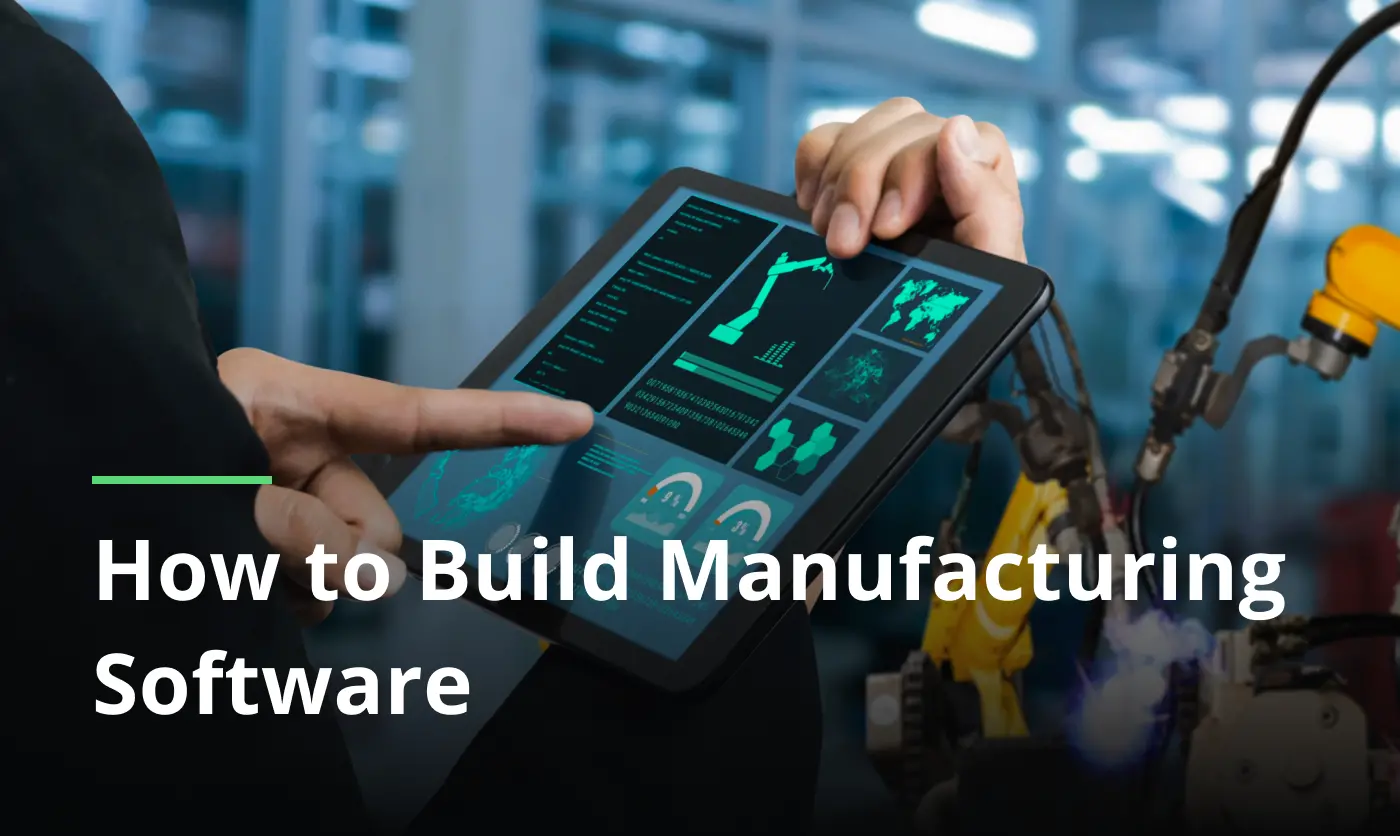
Effective inventory management in an operational environment is conceptually inseparable from operational success. You can learn more about the tasks that manufacturing software development solves, get acquainted wit h the stages of its development, and the expected cost and functions that will facilitate work processes from our review.
Undoubtedly, technological advances are transforming this field, which is why more fabricators are turning to industrial software development. Since our company has been successfully commencing such systems for a long time, we have created an outline to help you understand this area’s intricacies and various aspects.
Most business owners turn to custom software development for the manufacturing industry to reap the main bonus — charge reduction while increasing potency and efficiency. After reading this summary, you will have a much better understanding of how exactly manufacturing software solutions can be handy for achieving this cherished dream.
What is manufacturing software?
In recent times, the management of construction enterprises has evolved into an intricate puzzle comprising numerous components. Failing to account for even a single element can hinder the comprehensive achievement of success. This is where custom manufacturing software development serves as a crucial tool for business owners.
The processing automation suite is often mistaken for ERP, but they serve different purposes. Engineering workflow tools are typically a subset of ERP, focusing on shop floor administration, while ERP covers a broader scope including finance, marketing, and human resources.
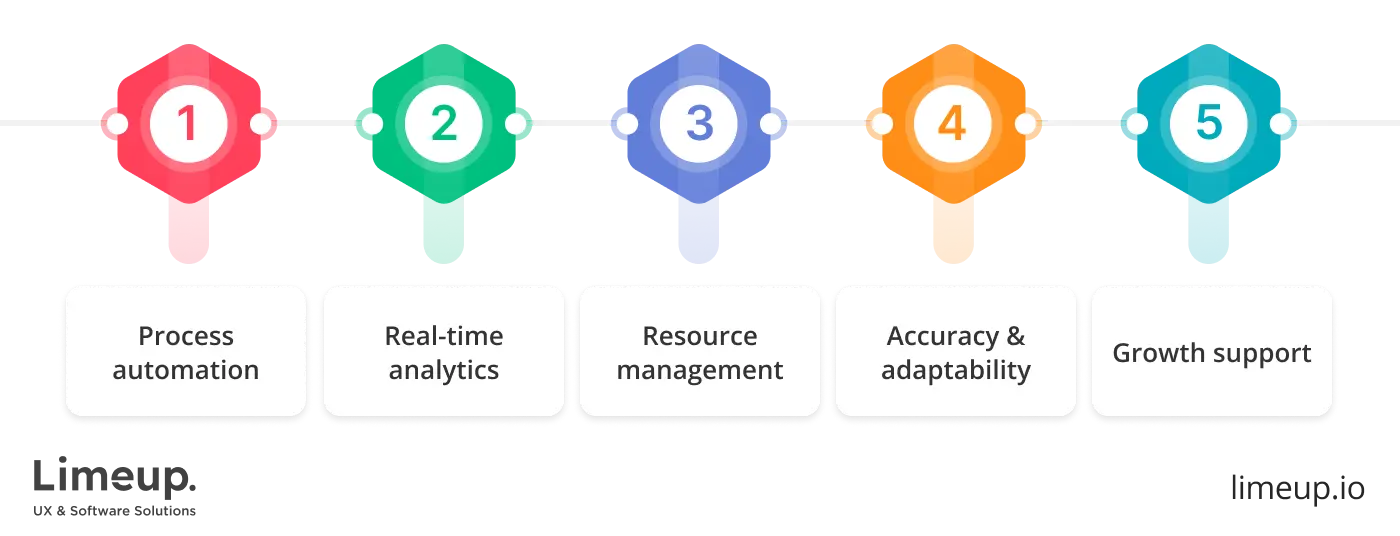
Organizations are looking to hire software developers who can improve management coherence and streamline tech-driven operations at all levels, prioritizing flexibility and transparency. This can be effectively achieved through advanced features such as:
- in-depth data analysis,
- proficient production planning,
- intelligent inventory oversight,
- scheduling maintenance,
- ongoing quality control.
However, custom industrial software development is useful not only in solving problems in the fabrication field, but also in controlling business operations, which is relevant during periods of formation or engineering. For example, uninterrupted supplies or an expansion and unification plan can be generated based on technology and thus avoid possible inaccuracies.
Another important skill that this type of platform has is increased accuracy, because a computerized approach is always more accurate and adaptive to changing conditions. When owners receive summaries and reports in real-time that reflect true indicators and there is no room for errors, making decisions becomes much easier.
To summarize, it can be said that an organization of any format and size can easily automate labor-intensive tasks that take time and resources away from more important aspects of the activity. The ability to eliminate shortcomings in business processes and receive effective implementations in return can generally be considered a significant bonus.
What are the steps for manufacturing software development?
Before diving headlong into the crafting process, it is worth learning the step-by-step instructions our experts have prepared for you. This way, you will be able to better plan your actions and avoid wasting your time.
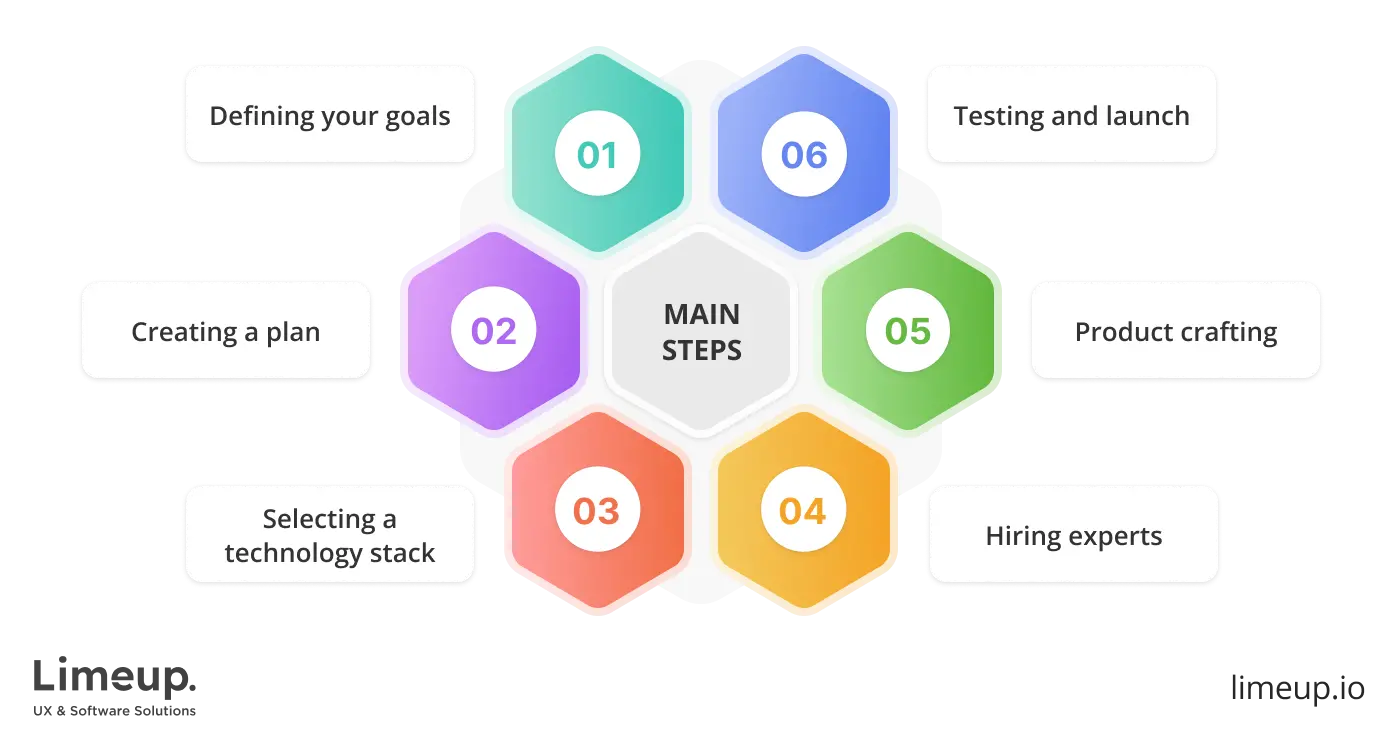
Step 1. Defining your goals. This step is not without reason in the first place since its correct completion determines the set of integration functions, the choice of codebase type, the scale of the future output, and the need for additional modules.
Understanding the direction of subsequent actions will help a dedicated development team create an invention that exactly matches the specific features of a given industry. The customer will not waste time and money on unnecessary options.
Step 2. Creating a plan. A well-structured model should include the appearance and operating principles of the item, the order of storing and structuring data, and the course of interaction of various modules.
If your roadmap includes functions and potential capabilities in addition to this, then this will become a verified strategy that will keep the campaign on the right track and allow software development for manufacturing to deviate from the intended goal.
Step 3. Selecting a technology stack. This is another important point that largely determines the direction of action. The selected set of technologies determines how smooth and reliable the automated assistant will be and whether it will be able to easily integrate and support end-to-end management.
You can choose popular programming languages, such as JavaScript, Python, or C++, which have excellent results in generating efficient formation programs. However, it is better to consult with engineering experts and rely on performance requirements.
advanced control systems
Step 4. Hiring experts. This should be a team of not just platform builders but experienced virtuosos who have been creating upshots for mechanized crafting for many years.
It is also essential to choose a contractor who understands the process of transforming operations and how to ensure efficiency and optimization of business processes. Such professionals are presented, for example, in the list of software development companies in London.
It would be good to clarify before starting industrial software development whether the contractor delivers services for further project support, in what volume, and on what terms. You are unlikely to want to be left alone with the need to upgrade the object or solve suddenly arising technical problems.
Step 5. Product crafting. Using all the innovations and practices of modern trending areas, participate in the process of creating a system that will later become your right hand and remove most of the labor-intensive tasks from your shoulders.
Remember the CRM, ERP, or PLM integration process to ensure smooth workflows. It is also vital to fine-tune the functionality to your niche’s needs to get the perfect match.
Step 6. Testing and launch. So, almost the entire path is behind us, and it remains only to avoid missing the inaccuracies that can nullify all efforts. Therefore, trust the professional testers and get ready to launch your ready-made super-solution.
This is where agreements on post-support and maintenance come in handy, since who, if not the manufacturing software development company knows in remarkable detail what needs to be adjusted so that the mechanism works without failure?
After completing all the steps described, your automated systems can take flight, relying on smarter digital architectures. Automation, quality control, supply chain supervision, and other labor-intensive operations will become so simple that you will feel the strength for further achievements!
Key features of custom software development for manufacturing
Research has shown that 23% of all unplanned production downtime is due to human error. Hence, the desire to avoid such unfortunate incidents is understandable and all the capabilities of operational intelligence systems are used to this end.
In general, of course, these depend on the specific demands of the industry and the experience of the person synthesizing the utility. Any basic computing module offering should initially include key features. This guide will help you understand the structure and determine which functions best meet your ambitions.

So, the main necessary functions in this type of executable package are:
— Production planning and scheduling.
This includes such items as lead time calculation, Gantt charts and visual planning, formation and trailing of work orders, and oversight of fabrication orders.
— Inventory coordination.
Among this group of industrial manufacturing software development services, it is worth highlighting barcode and RFID integration, lot and serial number tracking, real-time stock visibility, inventory pursuit, and control.
— Supply chain management.
In this section, pay attention to the modules for collaboration and communication with suppliers, demand forecasting and structuring, material requirements planning (MRP), and purchase order administration.
— Quality supervision.
This type includes statistical process control (SPC), corrective and preventive actions (CAPA), nonconformance coordination, and quality guidance inspections and tests.
— Reporting and analytics.
Quite an important part of the functionality, including customizable dashboards and reports, expenditure analysis and profitability tracking, OEE (overall equipment effectiveness), and processing efficiency metrics.
— Equipment maintenance.
To ensure everything in custom manufacturing software development runs smoothly, consider modules for spare parts handling, downtime tracking and evaluation, and maintenance orders.
— Mobile access and remote monitoring.
To always have control at hand, you need notifications and alerts on mobile devices, touchscreen barcode scanning and data collection, remote monitoring of goods formation operations, and mobile apps for real-time access.
— Document management.
Do not forget about document administration, which can help structure the activities of the enterprise. To do this, add compliance documentation, work instructions and visual aids, standard operating procedures (SOPs), and a form storage system and version control to the initiative.
Of course, this entire list does not necessarily have to be in your creation, but it will be easier to choose from the listed ones, and you yourself, under the guidance of experienced technical experts, will be able to assemble your own individual platform that perfectly solves the tasks at hand.
How to select a company for industrial software development?
Every business is unique from the start and has unique requirements for work processes, and suppliers of different formats and levels organize their work differently based on their capabilities and previous experience. However, some standards allow you to get a guaranteed result, and that is why we will describe the portrait of the ideal contractor.
If you represent a large enterprise and need a large-scale reformation, including a complete update of digital components, hire software engineers from a giant corporation that has sufficient competence in software development in the manufacturing industry. In addition, they have a fully staffed staff and will be able to contribute massive volumes in adequate time frames.
If a slight reorganization is necessary and your financial resources are constrained, it may be beneficial to utilize the services of a smaller agency with expertise in embedded control toolkits. They will fulfill your order with a full understanding of the task, but at the same time, you will not have to go through long and complex communication with many levels of conception approval.
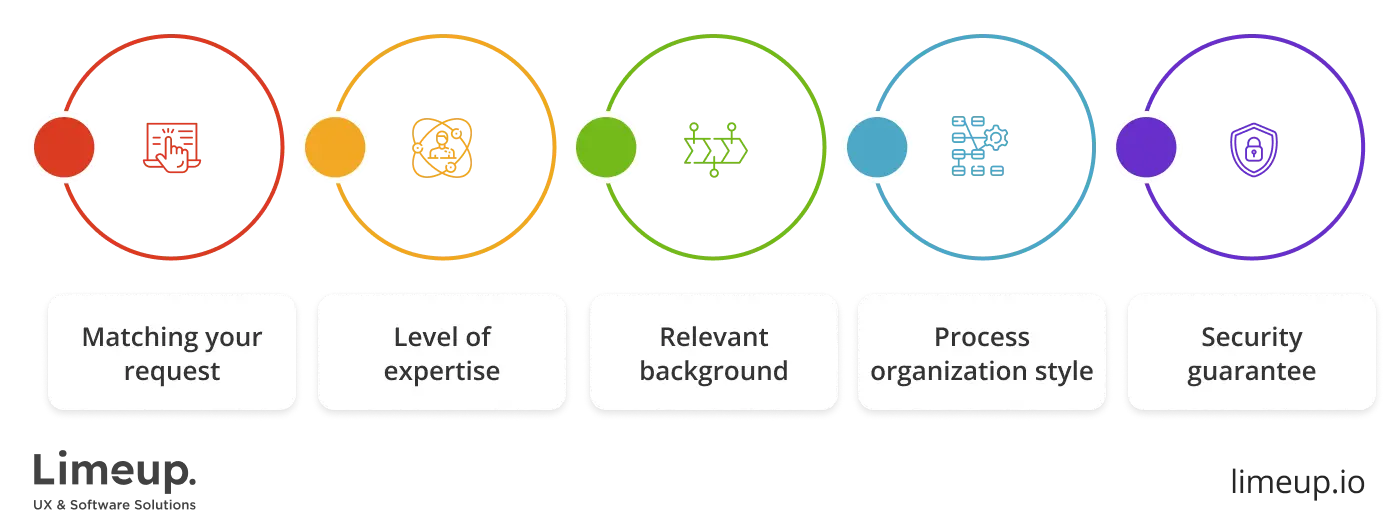
But whatever your choice in terms of a future contractor, the compliance criteria will be mostly similar. And we suggest you take a look at them to get an idea of who would be best suited for your deployment package construction.
- Matching your request. At the stage of defining the case goals, you have already analyzed in detail the ideas and functionality that should be in your invention. You also have a good understanding of your business’s needs and the aspects you plan to improve. Now, you need to determine whether the manufacturing software developer can meet these specifications.
- Level of expertise. It is crucial to understand whether the employees have sufficient knowledge to implement your ideas. Do you need experience in creating programs under HIPAA or maybe in the process of generating ideas you have decided to use machine learning and then you will require specialists in this field. Understanding the level of competence will help you make a more accurate choice.
- Relevant background. Of course, you will only look among professionals with proven expertise in creating entities for the sector. However, there are some nuances here. For example, it would be good to clarify the fine points of previous cases, because each area of custom manufacturing software development services has its own specifics and if the provider is familiar with them, this will greatly simplify future cooperation.
- Process organization style. It will be most straightforward to communicate with those teams that have adopted the Agile or Scrum approaches since this will allow you to be constantly aware of each change. Concerning testing hypotheses, it is worth determining whether the performers consult with users or rely only on their assumptions. This parameter specifies the accuracy of solving specific problems in the future.
- Security guarantee. Since such a building process involves the exchange of ideas and confidential information, be sure to determine whether appropriate measures have been taken to protect your data. The voluntary signing of an NDA or the presence of encrypted storage is an excellent signal that you have no reason to worry.
Use the above as selection criteria, and you will find the vendor who will masterfully implement your bold ideas and help facilitate yielding processes.
How much do manufacturing software development services cost?
The expenses associated with establishing automated assembly tech can significantly fluctuate based on the complexity of the application and the unique specifications of the master plan. For instance, the implementation of straightforward connected fabrication systems typically ranges from $30,000 to $60,000, whereas projects of moderate complexity may incur rates between $80,000 and $150,000.
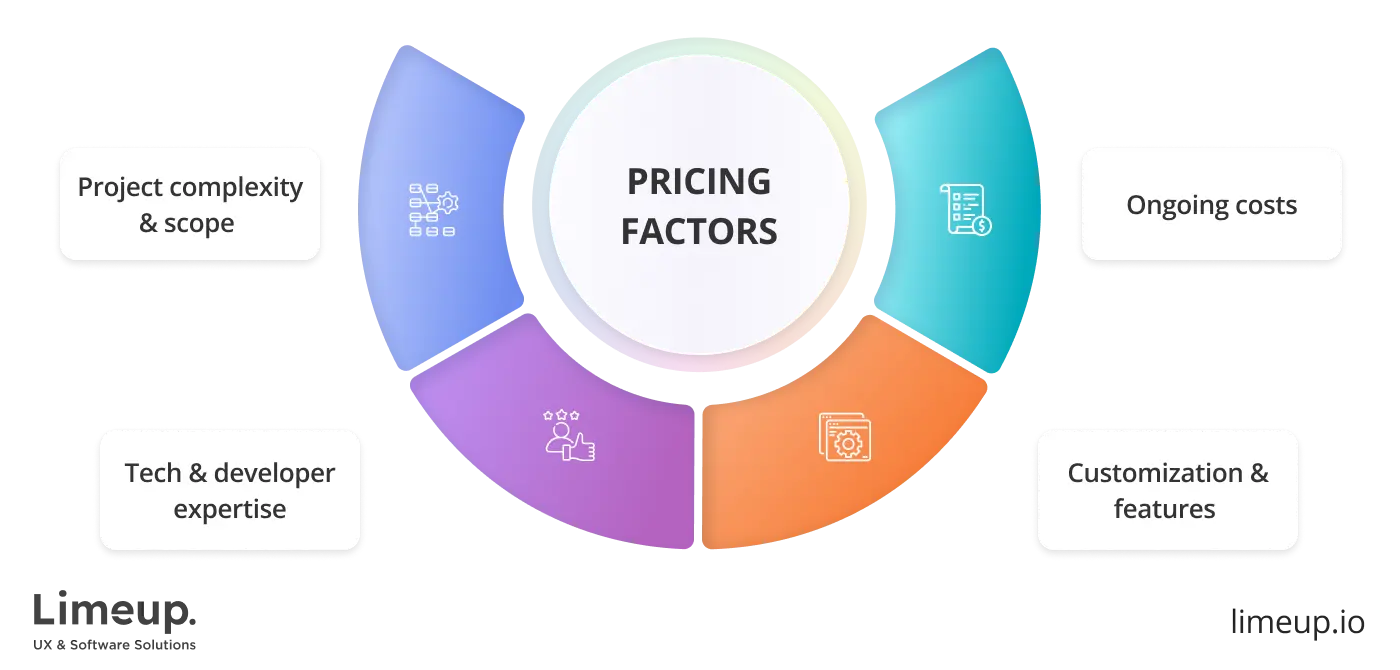
Furthermore, creating more sophisticated platforms that include advanced features and functionalities could potentially exceed $200,000. It is vital to note that these valuation estimates are broad approximations, and actual expenses may vary due to factors such as the mastery of manufacturing software developers, the technology stack employed, customization requirements, and the overall scope of the mission.
Let us review a series of comprehensive quote estimates.
| Type of soft | Average cost | Application attributes |
| Basic solutions | $10,000 – $40,000 | These options are well-suited for small businesses that require uncomplicated catalog management, as they deliver fundamental inventory tracking, order running, and basic reporting capabilities. |
| Mid-range systems | $40,000 – $100,000 | These systems are ideal for mid-sized organizations. They also offer supplementary services such as analytics, multi-location tracking, and the ability to seamlessly integrate with user tools, like ERP systems. |
| Advanced custom mechanisms | $100,000+ | These packages leverage the Internet of Things, real-time data, and sophisticated automation to integrate the IoT ecosystem, offering larger and more complex organizations valuable insights in these domains. |
A mere fraction of the overall expenditure is allocated to the formation process; therefore, organizations must account for the continuous expenses associated with operational maintenance and enhancement. This includes:
- Licensing fees: Software as a Service (SaaS) models generally impose charges ranging from $100 to $200 each month per user, which can escalate into substantial recurring costs for larger teams.
- Maintenance/support: regularly scheduled updates, bug resolutions, and both minor and major enhancements can incur expenses anywhere from $1,000 to $10,000 annually.
- Training fees: moreover, the investment in training personnel to effectively utilize the programmatic tools represents a crucial financial commitment.
Summary and insights
Implementing inventory management into digital workflow frameworks represents a significant financial commitment. However, this investment can yield significant returns through enlarged operational efficiency, reduced outlays, and increased customer satisfaction. Regardless of the size of the organization, choosing the right manufacturing software development services requires a comprehensive understanding of the tariffs and benefits involved.
Working with a reliable partner can facilitate a smooth implementation process and provide a customized innovation that meets the company’s goals. If you want to start this successful journey as soon as possible, contact Limeup, where experienced professionals will be able to select the ideal combination of tools. Since after reading our article, you are armed with values about the process, it will not be difficult for you to clearly define your needs.

